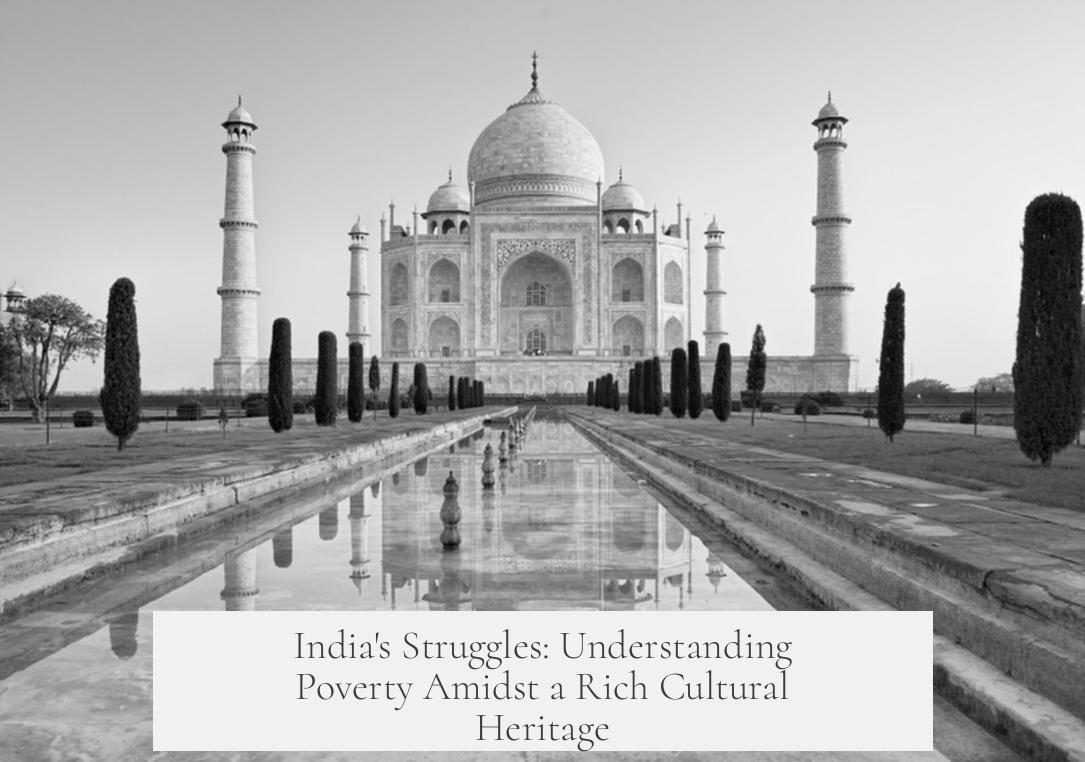India is poor today despite its historically rich and wealthy past due to a combination of colonial exploitation, disruptive economic policies, historical invasions, and post-independence economic challenges.
Before British rule, India was a largely self-sufficient, pre-industrial society with a strong agricultural base and flourishing artisanal industries. Around the mid-19th century, approximately 55% of the population was engaged in agriculture. Villages operated as largely independent units, producing food mostly for local consumption and supporting vibrant artisan communities like weavers, potters, and metalworkers. India’s textile sector was a globally significant industry, with extensive foreign trade attracting Europeans who highly valued Indian spices and textiles since Roman times.
Colonialism drastically altered this landscape. Initially, the East India Company’s trade with India was mutually beneficial but shifted towards political domination to maximize profits. Political subjugation enabled British authorities to control land revenues and redirect economic outputs. Import restrictions and high tariffs in Britain (like 60% duties on Indian textiles between 1720 and 1820) systematically suppressed Indian merchants and weavers.
The rise of British manufactured goods supplanted Indian products. Textile exports from Britain to India exploded—from about £156 in 1793 to roughly £6.3 million by 1856—turning India into a major importer of British manufactured goods and exporter of raw materials. This colonial economic model deindustrialized India, destroyed its artisan base, and embedded it as a supplier of raw materials for British factories.
- Local artisans lost employment as princely courts, which had patronized craftsmen, disappeared.
- Increasing numbers of displaced artisans returned to agriculture, raising the agricultural labor force from 55% to 72% between the 19th and early 20th centuries.
British land revenue systems such as Permanent Settlement and Zamindari demanded high cash rents—often one-third to one-half of produce—with little regard for actual agricultural output. Failure to pay led to evictions, and these policies undermined traditional land ownership and village communities. Farmers often fell into indebtedness, becoming tenants or landless laborers, while landlords and moneylenders concentrated power. This contributed to agricultural stagnation and lowered per capita output.
Historical invasions before British rule—Turkic, Islamic, and others—had already caused destruction of infrastructure, education, and peaceful trade routes. These disruptions left India vulnerable socially and economically. Under Mughal rule, the economy suffered from exploitation and social distress.
The British exacerbated these problems, causing mass famines—over 40 during their rule—with catastrophic death tolls. During famines, food was sometimes deliberately withheld to support colonial strategic aims. Wealth extraction through land taxes and export of food grains intensified poverty. The East India Company’s administrative neglect also included reducing funding for local education, leading to a steep decline in literacy.
After independence, India adopted socialist economic policies and maintained a controlled economy known as the License Raj. This system, along with limited capitalist development, slowed growth markedly until economic liberalization reforms began in the 1990s. This period is often called the “Hindu rate of growth,” highlighting prolonged slow economic progress.
Culturally, India values knowledge, spirituality, and harmony over material wealth. The traditional worldview often regards worldly possessions as ‘maya’ (illusion), which impacts societal attitudes towards accumulation of wealth. Additionally, measuring wealth purely in terms of GDP or currency ignores India’s rich natural resources, cultural heritage, and human capital.
| Factor | Impact on India’s Poverty |
|---|---|
| Colonial Exploitation | Deindustrialization, wealth extraction, trade restrictions |
| Land Revenue Policies | Agrarian distress, indebtedness, loss of land ownership |
| Historical Invasions | Infrastructure destruction, social disruption |
| Famine & Food Exports | Mass death, food scarcity |
| Post-Independence Policies | Slow economic growth until 1990s reforms |
| Cultural Factors | Different values towards material wealth |
These elements combined to transform India from a wealthy, diverse economy into a poor country with limited industrialization and agrarian stagnation. The systematic colonial destruction of local industries and imposition of foreign economic models played a particularly decisive role. India’s recovery from these historical disruptions remains ongoing.
Key takeaways:
- Pre-British India had strong agricultural and artisanal sectors with extensive foreign trade.
- British colonial policies dismantled industries, imposed high taxes, and promoted export of raw materials.
- Land revenue systems disrupted traditional farming and village economies.
- Repeated invasions before British rule weakened social and economic structures.
- Post-independence socialist policies slowed economic growth until liberalization.
- India’s cultural values emphasize non-material wealth, complicating economic assessments.




